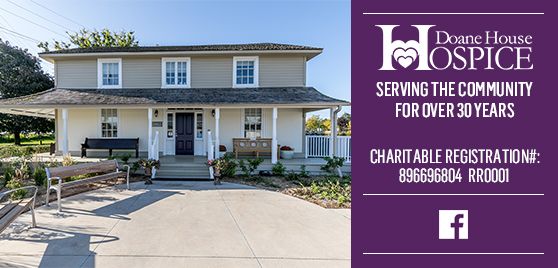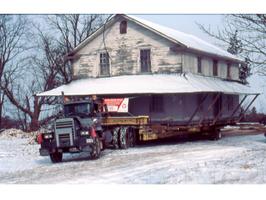
Picture This
Help sustain the Art Therapy program by purchasing prints of some of the art created by the clients.

DHH is a dynamic non-profit organization dedicated to enhancing quality of life through the provision of non-medical support for those affected by or caring for an individual with a life-threatening illness, as well as bereavement support.
The Seneca Doane House, designated both for historical and architectural interest, was originally located south of its current location, on the west side of Yonge Street and just north of Clearmeadow Boulevard in Newmarket.
In the 1840's, Newmarket was a bustling town, with new industry, improved roads and established farms. Built circa 1845 as a home for Seneca Doane (1818-1898), a farmer, and his wife Elizabeth (Webb) Doane (1822-1881), it has been used as a dwelling place continually since that time, primarily by members of the Doane family. Construction of this residence probably started around the time of Seneca Doane's marriage to Elizabeth Webb, of King Township in 1841, and the death in 1844 of his father, William Doane.
The Doane family was a member of the Religious Society of Friends (Quakers) who moved here from the United States and worshipped at the Quaker Meeting House which still stands adjacent to their original property. In addition to being farmers, Doane family men were skilled carpenters, and made a significant contribution to the construction of other Quaker buildings in the area, including the Yonge Street Meeting House in Newmarket and the Sharon Temple in East Gwillimbury.
This two-storey home, built in a rectangular plan, had its original principal facade (which faced east) organized into three bays. Its kitchen tail, a single storey frame in the centre back, had woodsheds attached to it. The house had wood clapboard siding, except for the walls under the front porch roof which had been dressed with smooth ashlar-lined stucco to simulate stone.
There are three entrances to the house, each with paneled wooden doors. Wrapped around three sides of the house to protect its several entrances is a graceful verandah with bell-cast roof supported by wooden turned posts on the wooden floor of the verandah. The ceiling of the verandah is finished with narrow boards with a beaded edge. Sometime late in the 19th century, a window in the wall of the ground floor dining room was enlarged into a bay window looking out over the verandah with a seat along the window frame on the inside of the house.
In 2001, agreement was reached between the Hospice (formerly called Hospice Newmarket), the Town of Newmarket and the Region of York to relocate the house which had been vacant for a few years to its current location on the corner of Yonge and Eagle Streets in Newmarket, just one block north of its former location, and convert it to use as a hospice serving north Aurora, Newmarket, Bradford and East Gwillimbury. Relocation was necessary as the property had been sold to developers.
What followed was an amazing display of community spirit and determination. With a grant from the Ontario Trillium Foundation and monies raised in fundraising endeavors, combined with volunteer labor from both individuals and corporations, over an 18 month period the home was transformed back to its former glory of a well-built Quaker building, and reflects the care and quality of workmanship of the early Quaker years.

|
|
The work of Doane House Hospice is well suited to the warm atmosphere which you feel when you open the main door of the house, with its view of the original pine floors and welcoming bay window. The banister on the staircase which takes you upstairs to the organization's offices is the original picket style one. Many of the windows in the house which make it so well-lit have original glass in them.
Inside the home, the Elman Campbell Museum maintains a showcase of artifacts about the Doane family and the life in those times. It is easy to speculate that Elizabeth and Seneca Doane would have been astounded, but proud, to see their home today.

Help sustain the Art Therapy program by purchasing prints of some of the art created by the clients.

Art Therapy is a different approach to traditional talk therapy, where participants can use the art process to express thoughts and feelings they may not know how to otherwise express.